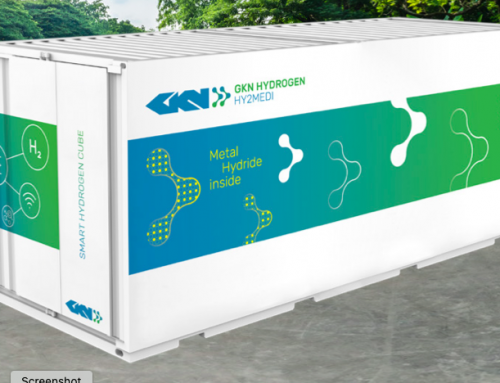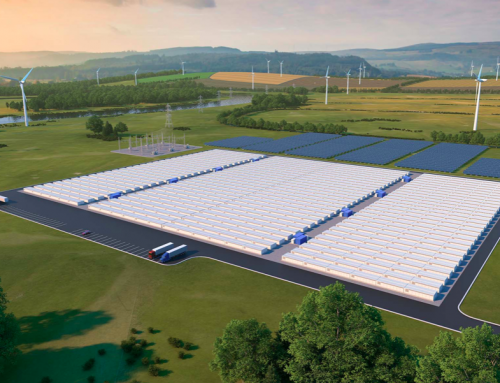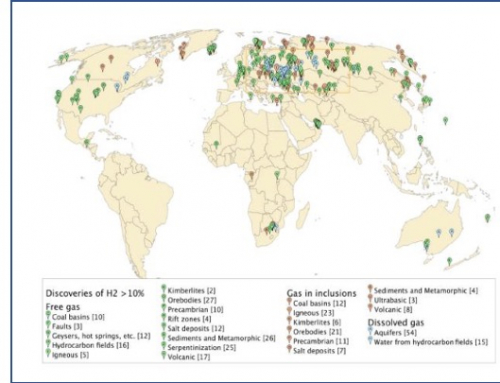By Julian Singer
Pumped hydro storage was the first long term electricity storage system, having been introduced in the 1890’s in Italy and Switzerland. The total capacity of such systems is still more than from any other technique world-wide. However, in most countries there is not much potential for future development. A natural pumped storage system requires a high-altitude water reservoir near a low-altitude reservoir, a situation that is not that frequent. Creating a reservoir is expensive and raises even more environmental objections than adapting a natural system.
RheEnergise thinks it has a solution. The power generated by pumped storage systems depends on the height between the two reservoirs, while the energy stored depends on the volume of the reservoirs. Both depend directly on the density of water. RheEnergise’s idea is to use a fluid that has two and a half times the density of water. Reservoirs can then be smaller by the same factor, so that practical systems can be built using large (buried) tanks as reservoirs and placing them at the top and bottom of a suitable hill. To store electricity a turbine at the bottom will push the fluid from the bottom reservoir to the top reservoir; to generate it the process is reversed.

www.rheenergise.com
The company calculates that such systems could produce 5MW to 50MW of power[1]. They could in theory be larger or smaller but would not then be optimal in terms of cost or efficiency. The ideal site has a head (or depth difference) of between 100m and 300m, with a gradient of at least 10 per cent and with 1 hectare space for the tanks at top and bottom.
The key technology is the fluid. Fluids can be made dense by adding small solid particles, but then a surfactant is needed to hold them in suspension. Small particles can damage the blades of the turbine. Alternatively, a heavy fluid can be used with or in place of water. The problem with such fluids is that their viscosity can vary strongly with temperature. A high viscosity reduces strongly the efficiency of the turbine. It is possible to prevent the viscosity becoming too high by heating the fluid, but this would, of course, consume some the electricity being stored and reduce the efficiency.
RheEnergise uses a fluid called R19 but does not divulge its properties other than that it has a viscosity similar to milk. The company claims a round trip efficiency of around 80 per cent, which is slightly less than Lithium-ion batteries (before the latter degrade with time) and better than most other proposed systems. The levelized cost of storage (LCOS) is also predicted to be less than Lithium-ion batteries and indeed any other system except possibly Compressed Air Energy Storage. However, a commercial system has not yet been built.
The ideas for the system were developed by Tomas Bertenyi and Christian Porowski in Canada before RheEnergise was formed in the UK with Bertenyi as a co-founder. The pair’s patent for the technology has recently been approved. A small version of the system was built in Montreal in 2022 and used to prove that a high-density fluid can indeed increase the power and capacity as expected.
The next step is to complete by summer 2024 a demonstrator system near Plymouth with 250kW power and 1MWh capacity. This is partly funded by a £8.2m grant from the government as part of the Longer Duration Energy Storage Programme (LODES), and comes on top of a £0.15m grant for preliminary studies. The remainder is privately financed. A further grant of £1m will be given to a joint project with the universities of Exeter and Greenwich to identify and test suitable waste materials that could be used in the fluid. It is hoped that the first 5MW grid-scale system will be in commercial operation within 3-5 years.
RheEnergise’s idea is intriguing: a simple upgrade to an existing proven technique. The risk that it will not work is small, but meeting the targeted efficiency and LCOS may prove more difficult. The company’s analysis shows hundreds of suitable sites in the UK and thousands in North America but, although much smaller than conventional Pumped Storage, the biggest challenge is likely to be obtaining land and building permits and overcoming local opposition.
[1] In comparison the Dinorwig storage site in North Wales can produce 1728MW of power and can store 9.1GWh





